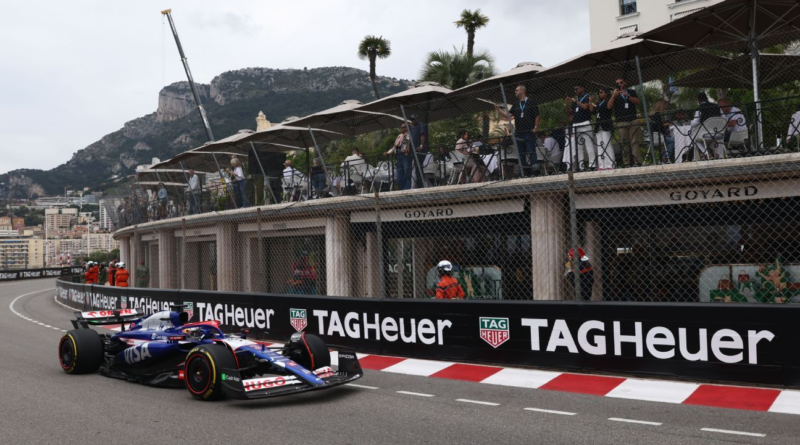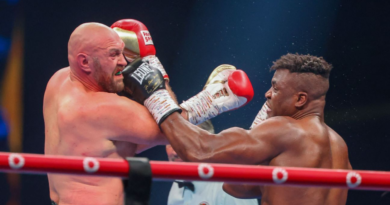'Scary and beautiful': Monaco is F1's greatest contradiction
MONACO — The duality of the race so often described as Formula One‘s jewel in the crown, the Monaco Grand Prix, remains as clear as ever.
While qualifying for the event, which snakes around the twisty streets of the Monte Carlo harbourside, is rightfully considered one of the standout moments in a Formula One season, many see the often-processional race that follows on Sunday as one of the worst. Lewis Hamilton, a four-time winner of the grand prix and one of the many F1 drivers who is a resident of the principality, is one of the biggest advocates for a format change.
“Do you guys not fall asleep on Sunday watching the race?” he asked the media ahead of this weekend’s event. “I don’t know how you do it.”
Like most in F1, Hamilton’s reservations about the final product do not diminish his love for what the event means and what it stands for. His boyhood idol Ayrton Senna is as synonymous with the race as the yachts that line the harbour throughout the three days of track action.
“I always feel when you look into the harbour, you look over this place and you think about the history, it just blows you away,” Hamilton said. “I remember watching on TV as a kid, dreaming of going through that tunnel where Ayrton was. It is very, very surreal to think today that I’m one of the 20 to do it. Even though it’s been so many years and I’ve been doing it for so long, I think I was really grateful for that moment this morning to feel that.
– Watch the Monaco Grand Prix all weekend on ESPN networks
“I was just reflecting on when I first came here when I was 13, and that really opened my eyes. That became a dream, like, OK, this is the most beautiful place I’ve ever been; this is where I want to live.”
Monaco’s race certainly looks like no other. The yachts lining the harbour form an iconic backdrop, as do spots such as the hairpin at Casino Square and the famous tunnel section. That backdrop, a city for the super wealthy located between the Maritime Alps and the French Riviera, is unmatched at any other event. The circuit has remained largely unchanged in its long history as a world championship race — only the COVID-19 pandemic in 2020 interrupted a run of races stretching back to 1955.
The narrow 3.337-kilometre circuit is the shortest in the championship. Its narrow roads, lined with barriers on either side from start to finish, have made qualifying one of the most revered and anticipated days of the year.
“One of the best moments of the season, I agree on that,” two-time race winner Fernando Alonso said of Saturday’s qualifying. “Maybe only Sunday is the bad day, let’s call it! There’s not much you can do [about that]. Could be a little bit boring as well, you just need to bring the car home and things like that.
“All the sponsors, they want to come here. All the VIPs, they want to come here. So as I said, until Sunday, is the best weekend of the year.”
What makes qualifying so good?
It is so often said qualifying in Monaco is the one day of the year when the driver can make the most difference over the course of a season. They will lay it all on the line like they haven’t done since one year earlier.
“It’s the only qualifying of the season you go through corners at a speed you’ve never been before, so it’s a total guess and total commitment,” Alonso said. “Adrenaline is very high.”
Drivers spend the week’s three practice sessions, each one hour long, building up the confidence to attack the circuit flat out in qualifying. It is all or nothing, with the faintest graze against the wall enough to ruin the whole event and consign a driver to the back of the grid for a long and frustrating race on Sunday.
Alonso himself will know that better than most, having crashed during final practice in 2010, when he seemed like a strong contender for pole position. The damage kept him from taking part in qualifying. Both Max Verstappen (in 2018) and Charles Leclerc (in 2021) have ruined an entire race weekend by crashing during qualifying when in competitive cars.
“The highs are high and the lows are low because you know that if you qualify bad, the weekend’s pretty much done,” Daniel Ricciardo said ahead of this year’s race. “You can only be so optimistic on a track that doesn’t really allow overtaking. That’s why quali is such a powerful feeling around here, and when you do the lap it’s just this crazy, crazy feeling of awesomeness. It’s just fun.”
That qualifying spectacle is so special that it can be hard for drivers who have raced there before to watch from the sideline. Ricciardo, winner of the race in 2018, can speak to that, having been a spectator 12 months ago when he was Red Bull’s reserve driver — his surprise return to AlphaTauri, as RB was known then, was still a few races away.
“There’s such an envy where, I don’t know, the feeling of driving around here and having that opportunity to push a car to the limit is just, it’s so awesomely scary and beautiful and insane and intense that it’s like one of life’s greatest experiences,” Ricciardo said. “It’s hard to match a feeling like that, and I’m really excited to get that opportunity again. That’s the coolest thing.”
Ricciardo watched last year from the top of the pit lane complex with Red Bull boss Christian Horner.
“I remember standing there with Christian for maybe the start of quali, and I think he even said, ‘You’re missing this, aren’t you?’ And I was like, yeah, I said, ‘I’m really jealous right now of these guys.'”
Monaco is no longer F1’s only street circuit — the likes of Singapore and Las Vegas have joined in recent times — but the satisfaction of hooking up a good lap remains unparalleled.
“You always are fighting with the car in Monaco because of the track layout, the bumpiness and the way the track’s made,” Alpine’s Pierre Gasly said. “I would say the challenge and the exercise of really hooking it and nailing that lap in Monaco is harder than anywhere else.
1:23
Why Monaco’s GP qualifying is ‘more exciting’ than the race
Laurence Edmondson explains why the qualifying session for the Monaco Grand Prix will be more entertaining than the race.
“Because of that reason, when you do it, the satisfaction is higher than at other tracks. You just feel when it’s the lap. When it’s not quite the lap, you’ve had a snap, a bit more wheelspin, the car didn’t respond, you missed an apex or something, that feels the same as any other circuit … but that satisfaction when it all comes together — if you get that in Q3, for example — that’s a pretty awesome feeling.”
One other factor has changed the Monaco Grand Prix in recent years: how F1 cars have grown wider and wider with various regulation changes. While that has reduced the likelihood of overtaking from slim to almost nothing, it has also had a ramification on how drivers approach qualifying sessions.
“Pushing to the limit here with no margin for error, that’s the challenge at Monaco,” Aston Martin’s Lance Stroll said. “Now also it’s not just that but traffic; there’s always an issue here every year in the last sector, everyone kind of getting gaps to start their laps, so it’s not just the walls and the fine margins but it’s also track position, trying to be in free air, you know there’s a lot of lap time here, and getting the tyres prepped properly. It’s a track you need good confidence in your tyres in Turn 1, so it’s definitely a challenging track in many ways.”
Is a format change the answer?
Monaco’s race follows the conventional format most F1 events follow, with qualifying setting the grid for a feature-length grand prix on Sunday. With the calendar expanding in recent years — up to a record 24 this year — F1 has experimented with the sprint format to add some variation. There have been two sprints this year, with four more to come.
Hamilton feels something completely different should be considered for Monaco, especially given the size of modern F1 cars.
“Monaco continues to be … it’s Monaco, it’s not really changed much,” he said. “The cars are getting bigger. You can’t really overtake without the risk of colliding. I wish we had more, bigger roads, and the track could be wider, but I don’t think that’s ever going to be the case in Monaco because it’s just a small place.
“The race is continuously pretty much the same. It’s a one-stop race. I would say maybe special tyres for this race, so you have more pit stops that create more variability. Whether or not we have sprint weekends or … they can definitely come out with a specific weekend. You’ve got the sprint things that they’ve added, but for this particular weekend, I think they should come up with some new formula for it rather than it just be the same. That’s just my opinion.”
Ricciardo suggested F1 should lean into the fact that one lap on low fuel is so good around the Monte Carlo circuit.
“It should just be like a three-day time trial,” he said. “The track’s open for three days straight. Nine hours a day and you just pick when the temperature’s right, when it’s right and you try to settle up.
“Maybe that would make it different and interesting. Make the Sunday a bit more interesting, maybe.
“It’s still a different place, and I’ve lived here 11 years now and still doesn’t feel like home when I’m here for race week. It feels like this place transforms so massively that it just has this different feeling.”




